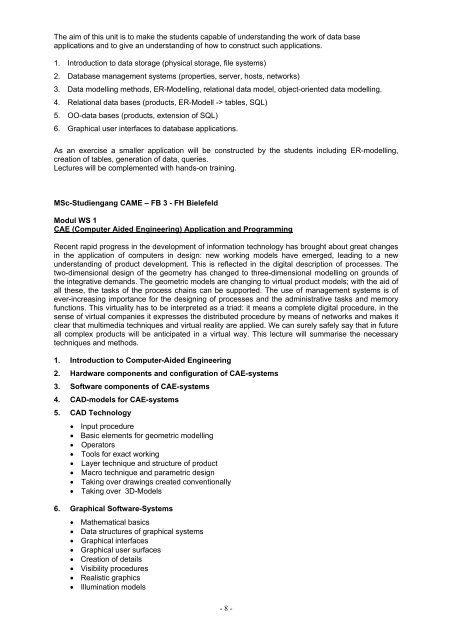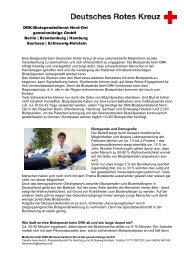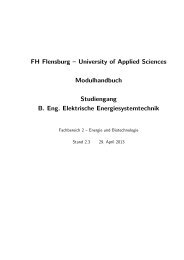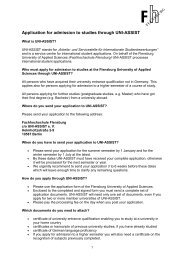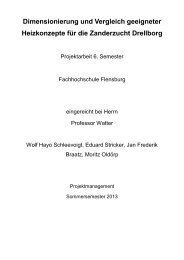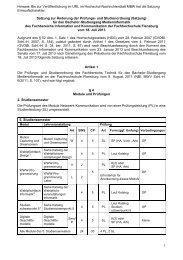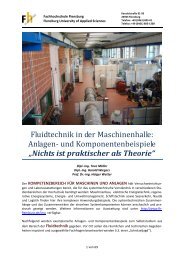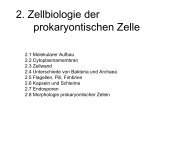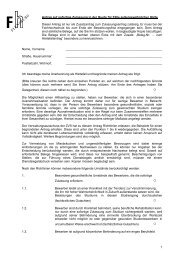- 1 - Studienordnung für den Master-Studiengang Computer Aided ...
- 1 - Studienordnung für den Master-Studiengang Computer Aided ...
- 1 - Studienordnung für den Master-Studiengang Computer Aided ...
Create successful ePaper yourself
Turn your PDF publications into a flip-book with our unique Google optimized e-Paper software.
The aim of this unit is to make the stu<strong>den</strong>ts capable of understanding the work of data base<br />
applications and to give an understanding of how to construct such applications.<br />
1. Introduction to data storage (physical storage, file systems)<br />
2. Database management systems (properties, server, hosts, networks)<br />
3. Data modelling methods, ER-Modelling, relational data model, object-oriented data modelling.<br />
4. Relational data bases (products, ER-Modell -> tables, SQL)<br />
5. OO-data bases (products, extension of SQL)<br />
6. Graphical user interfaces to database applications.<br />
As an exercise a smaller application will be constructed by the stu<strong>den</strong>ts including ER-modelling,<br />
creation of tables, generation of data, queries.<br />
Lectures will be complemented with hands-on training.<br />
MSc-<strong>Studiengang</strong> CAME – FB 3 - FH Bielefeld<br />
Modul WS 1<br />
CAE (<strong>Computer</strong> <strong>Aided</strong> Engineering) Application and Programming<br />
Recent rapid progress in the development of information technology has brought about great changes<br />
in the application of computers in design: new working models have emerged, leading to a new<br />
understanding of product development. This is reflected in the digital description of processes. The<br />
two-dimensional design of the geometry has changed to three-dimensional modelling on grounds of<br />
the integrative demands. The geometric models are changing to virtual product models; with the aid of<br />
all these, the tasks of the process chains can be supported. The use of management systems is of<br />
ever-increasing importance for the designing of processes and the administrative tasks and memory<br />
functions. This virtuality has to be interpreted as a triad: it means a complete digital procedure, in the<br />
sense of virtual companies it expresses the distributed procedure by means of networks and makes it<br />
clear that multimedia techniques and virtual reality are applied. We can surely safely say that in future<br />
all complex products will be anticipated in a virtual way. This lecture will summarise the necessary<br />
techniques and methods.<br />
1. Introduction to <strong>Computer</strong>-<strong>Aided</strong> Engineering<br />
2. Hardware components and configuration of CAE-systems<br />
3. Software components of CAE-systems<br />
4. CAD-models for CAE-systems<br />
5. CAD Technology<br />
• Input procedure<br />
• Basic elements for geometric modelling<br />
• Operators<br />
• Tools for exact working<br />
• Layer technique and structure of product<br />
• Macro technique and parametric design<br />
• Taking over drawings created conventionally<br />
• Taking over 3D-Models<br />
6. Graphical Software-Systems<br />
• Mathematical basics<br />
• Data structures of graphical systems<br />
• Graphical interfaces<br />
• Graphical user surfaces<br />
• Creation of details<br />
• Visibility procedures<br />
• Realistic graphics<br />
• Illumination models<br />
- 8 -


